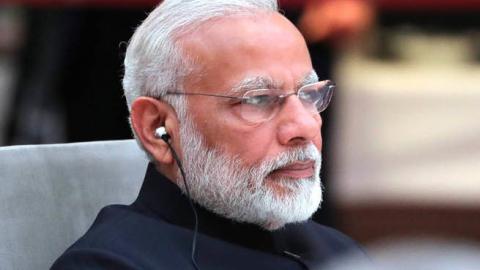The Economist, long considered the arbiter of liberal opinion in the English-reading world, upset supporters of Prime Minister Narendra Modi with its ‘ Intolerant India ‘ cover of 23 January. But soon after the 2014 Lok Sabha election that first brought Modi to national power, the same magazine’s cover had featured a triumphant Modi with the caption ‘Narendra Modi – India’s Strongman’, arguing that his “amazing victory gives India its best chance ever of prosperity”.
The news magazine is not the only one that was once upbeat about the prospects of India under its current leadership and has now turned pessimistic. 2019 has been bad for India’s global image and Indians must seriously examine what has changed in the last twelve or thirteen months. India’s current leaders seem to have disappointed both western liberals and conservatives simultaneously.
Just last year, in January-February 2019, India seemed poised to launch itself on the world stage as China’s potential rival. PM Modi and his ministers were then talking about punishing and isolating Pakistan for its unabated support for insurgency and terrorism across the border. Even the spectre of nuclear conflict, raised from Islamabad, failed to deter most countries from standing with India or acquiescing to its regional pre-eminence.
On the economic front, a Pricewaterhouse Coopers (PwC) – FICCI (Federation of Indian Chambers of Commerce & Industry) 9 January 2019 report suggested that Indian businesses were upbeat about future prospects, excepting “over 7 per cent growth in GDP in the next 12 months”. The World Bank forecast acceleration in growth in 2019 to 7.3 per cent for India and predicted robust consumption and investment growth.
A year later, India’s ability to inflict isolation on Pakistan seems to have ebbed as Indian diplomats are increasingly forced to explain and defend domestic policies abroad. The International Monetary Fund (IMF) has lowered India’s growth forecast to 4.8 per cent for FY 2019-20, adding that India’s slower growth is also holding back global economic growth.
US’ historical view of India
India has, of course, existed for 5,000 years and has survived natural disasters, bad rulers, internecine warfare, foreign invasions, colonial rule, Partition and mass poverty. It would be understandable if some Indian leaders dismissed the current spate of bad news with a this-too-shall-pass attitude. But the Indian civilisation’s resilience should not be invoked to justify setbacks to the aspirations of the modern Indian state.
India’s ambition to be a country that matters globally, not just because of its size, is not being realised. Optimism about India’s prospects has given way to frustration over the last one year, in particular, and the duration of the Narendra Modi government, in general. The reasons are not difficult to understand for anyone willing to scrutinise them.
Let us look at the United States’ view of India as an illustration of changing perceptions of India. American interest in India began with historian Will Durant’s 1930 book ‘The Case for India,’ published as a tract explaining why India mattered and why the world should support Indian independence.
Durant praised the spirit of the Indian people, expressed admiration for Rabindranath Tagore and Mahatma Gandhi, and argued that “there is something indecent and offensive in keeping such men and women in bondage.” In 1930, Time magazine also named Gandhi its ‘ Man of the Year,28804,2019712_2019711_2019680,00.html ‘.
After Independence, successive American statesmen spoke of India being a natural ally of the US based on shared values. Given that most Americans are Christian, and India is overwhelmingly Hindu, these shared values are not based on religion, but on the concepts of secularism, pluralism, individual freedom and democracy.
India’s support among the Americans traditionally came from liberals, who criticised the conservatives during the 1950s and 1960s for building a transactional relationship with India’s regional adversary, Pakistan.
Well into the 1980s, it was conventional wisdom that liberals and Democrats favoured India as a long-term partner in the subcontinent, while conservatives and Republicans tilted towards Pakistan, based on immediate advantages in the course of the Cold War.
Where India went wrong
However, western liberals are now disappointed with India. Prolonged detention of mainstream Kashmiri politicians, shutting down of the internet and communications, lack of access to even Indian politicians from other parts of India to travel to Kashmir, and police violence against peaceful protesters do not burnish India’s democratic credentials.
As for American conservatives, they came around to the idea of a long-term partnership with India only after the end of the Cold War and the liberalisation of the Indian economy in 1991. The lure of a market of more than one billion consumers and the prospect of India as a strategic military ally in future competition with China made India attractive even in a transactional sense.
But now, a lacklustre economic performance and the failure to significantly increase military spending to compete with China has made conservatives reconsider their expectations of India. The Modi government has disillusioned not only the western liberals now but also the conservatives.
Instead of the Indian government dismissing others’ disappointment or criticism, there may be greater merit in reflecting on it. “ Brazil is the country of the future — and always will be” became an expression years ago for that country’s inability to get its act together for realising its potential. India must avoid attracting a similar appellation.
Read in The Print

















